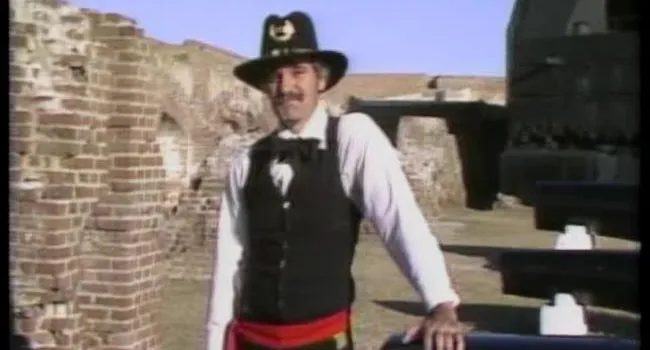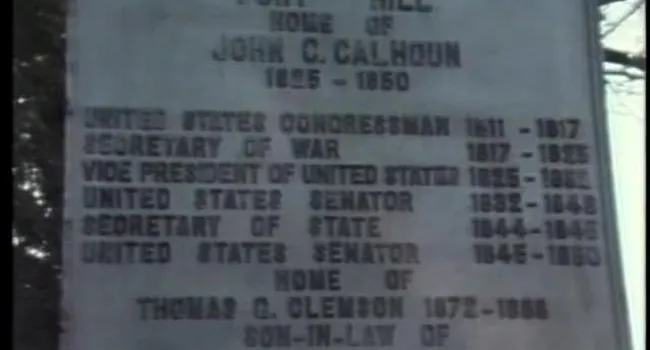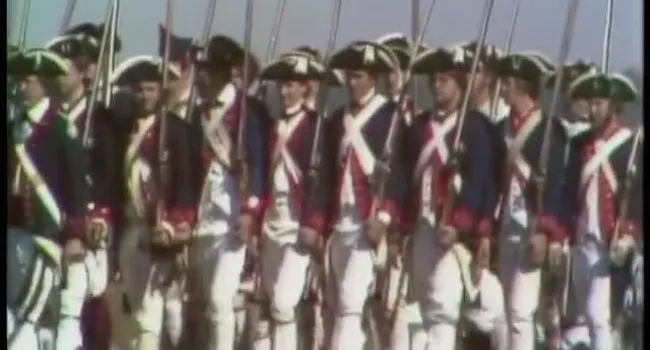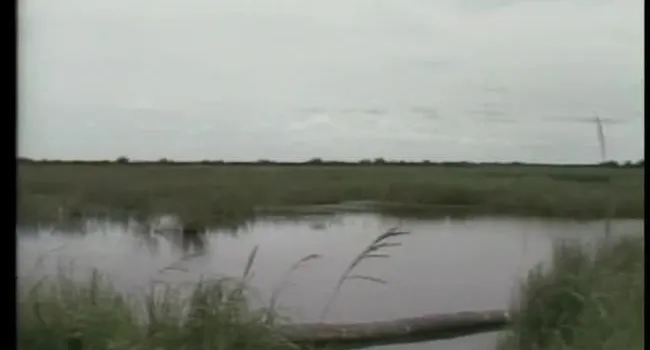This episode goes from Columbia to Parris Island in Beaufort County. Parris Island today is the home of a large Marine Corps training base. There is a monument there, similar in the design to one Captain Ribaut planted in 1562, that marks one possible site of Charlesfort.
The Reenactment: Jacques and Rouffi are two teenaged boys who have sailed to the new world on an expedition to establish a refuge for French Protestants (Huguenots). After a short while, the leader of the expedition, Captain Jean Ribaut goes back to France to obtain more provisions. About 28 Huguenots remain at Charlesfort. Captain Albert de la Pierria is placed in charge. He executes a young settler and banishes another, Lachere, to a barrier island. Discontent with the regime soon arises and Pierria is executed. Captain Barre assumes command and elects to return to France in a small homemade boat. Rouffi chooses to remain at Port Royal.
All of the characters, with the exception of Jacques, and events in this lesson are based on generally accepted historical research and evidence.
Standards
- 4.1.CO Compare the interactions among cultural groups as a result of European colonization.
- 4.1.CX Contextualize the experience of Africans, Europeans, and Native Americans in South Carolina.
- 8.1.CO Compare the three British North American colonial regions economically, politically, socially, and in regard to labor development.
- This indicator was developed to encourage inquiry into how the three British colonial regions developed in terms of their culture, economies, geography, and labor. The indicator was also developed to encourage inquiry into the unique story of the development of South Carolina.
- 8.1.P Summarize major events in the development of South Carolina which impacted the economic, political, and social structure of the colony.
- This indicator was designed to encourage inquiry into the development of South Carolina as a result of mercantilist policies, which ranged from the Navigation Acts to trade with Native Americans to the use of enslaved people as labor. This indicator was designed to promote inquiry into agricultural development, using the rice-growing knowledge of the enslaved West Africans.
Resources
You need to be logged in to listen to view this content. Create an account now; it's quick, easy, and free!
Log In to View










































